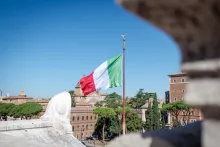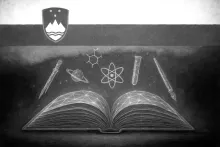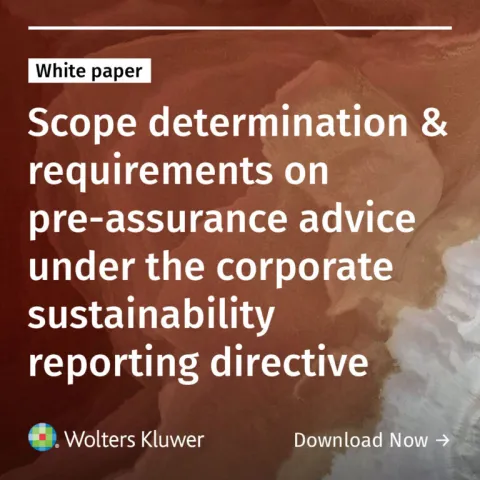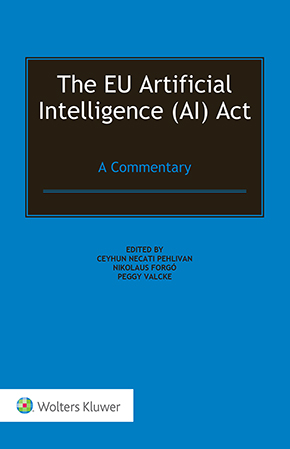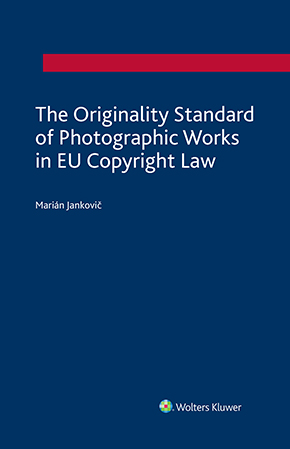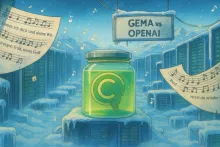Restating Copyright: The ALI’s Landmark Project and What It Means for the Law
July 29, 2025
In May 2025, the membership of the American Law Institute (ALI) completed a milestone in our understanding and interpretation of U.S. copyright law: the approval of its first-ever Restatement of the Law, Copyright. More than a decade in the making, the Restatement spans 83 sections and represents the culmination of an intensive, collaborative process involving legal scholars, judges, and practitioners.
The project was headed up by a team of Reporters—that’s us! (i.e., Professors Christopher Jon Sprigman (NYU), Daniel Gervais (Vanderbilt), Lydia Loren (Lewis & Clark), R. Anthony Reese (UC Irvine), and Molly Van Houweling (Berkeley)). ALI Reporters are the individuals, usually law professors, who structure the project, prepare drafts, and present drafts to ALI for discussion.
We wanted to take this opportunity to reflect on the project—what it is, why we undertook it, and what we hope it will contribute.
What Is the ALI and What Is a Restatement?
The ALI may be familiar to many U.S. lawyers from law school, where its Restatements are often used as teaching tools. Founded in 1923 with a mission to clarify and improve the law, the ALI is a nonprofit organization made up of about 4,500 members, roughly equally divided among judges, lawyers, and academics. Its most visible products are Restatements of the Law, which aim to describe the law as it is—not as the ALI (or anyone else) might wish it to be—and to do so in clear, accessible terms that courts and practitioners can rely on.
For over a century, the ALI has produced Restatements of the Law in numerous legal fields. They aim to provide clear formulations of the law as it stands or might be appropriately stated by a court. A Restatement isn’t a statute, and it doesn’t carry the force of law. But over the decades, courts at all levels have cited Restatements across many fields—including torts, contracts, and property—as helpful guides that synthesize the law in their fields.
Why a Copyright Restatement—and Why Now?
We began this project in 2014, when the ALI appointed us as the Reporter team. It was clear from the beginning that there was both an opportunity and a need. The Copyright Act of 1976 had generated decades of judicial interpretation, while new technological and cultural developments, especially in the digital realm, raised questions that were not squarely answered by the statute or caselaw.
ALI Restatements have long focused on areas that are substantially, though not exclusively governed by common law. Some people have questioned whether copyright, as a field of law primarily governed by a federal statute (the much-amended 1976 Copyright Act), was suitable for a Restatement at all. In fact, many prior Restatements have involved legal fields with important statutory components. And as anyone who has worked in copyright law knows, the statutory text is only part of the picture.
The 1976 Copyright Act leaves many critical questions unanswered and much of copyright’s practical operation depends on judicial interpretation and application. As with all statutes, of course, courts routinely confront questions of how to interpret the statute’s language and the interaction of its provisions. In addition, the Copyright Act is nearly silent on some topics, such as secondary liability doctrines or how to assess “copying in fact” and “improper appropriation” when a defendant is accused of copyright infringement. In other instances, the 1976 Copyright Act adopted concepts that had been created or developed by courts—including “originality” and the idea-expression distinction—without purporting to define those concepts. Fair use is another prime example: the doctrine was created by courts about a century before Congress codified it for the first time in the 1976 Act. Congress expressly stated [1976 House Report at 66] that it did not intend “to freeze the doctrine in the statute” but was leaving courts “free to adapt the doctrine to particular situations on a case-by-case basis.” So even where the statute provides a general framework, judicial interpretation has shaped the doctrine in ways that go far beyond the statutory text. Thus, for these core aspects of copyright law, the copyright Restatement performs a role very similar to that of other Restatements. In contrast, the Restatement generally doesn’t take up the less general, extremely detailed, and technical provisions of the statute—e.g., compulsory licenses, detailed subject-matter-specific limitations, or the statutory provisions governing restored copyrights. Our job as Reporters was to collect, organize, and synthesize the law as Congress articulated it and as courts have interpreted it—and to do so carefully, transparently, and inclusively.
As the U.S. moves deeper into the digital and AI age, interpretive issues only become more salient. We believed (and still believe) that copyright law’s core principles are robust enough to adapt to new contexts, and we saw the value of providing a structured resource to help courts navigate the sometimes messy landscape of precedent. The Restatement does not directly address emerging controversies such as whether training AI on copyrighted works constitutes infringement because courts have not yet developed settled law in those areas. However, its detailed articulation of fair use and secondary liability provides a roadmap of many of the principles that will be important in analyzing such questions.
What the Restatement Covers
The Restatement of the Law, Copyright provides clear formulations of the law as it is—or as it might appropriately be stated by a court. We focused on identifying and explaining the rules that Congress has adopted and courts have applied, and organizing them in a way that is faithful to the law and useful to those who interpret and practice it. The 11 chapters align closely with the structure of the 1976 Copyright Act, covering areas such as:
● Subject matter and standards for protection (e.g., works of authorship, derivative works, originality and fixation);
● Scope of protection (e.g., the expression/idea distinction, merger doctrine, scènes à faire);
● Ownership and transfers (e.g., joint authorship, works made for hire, transfer formalities, statutory termination rights);
● Formalities (e.g., registration, publication, and copyright notice);
● Duration of protection;
● Exclusive rights and statutory limitations (e.g., the copyright owner’s exclusive rights under § 106, the author’s rights under § 106A, fair use, the first sale doctrine);
● Infringement analysis (e.g., proof of copying, improper appropriation, and defenses);
● Secondary liability (contributory infringement (including by inducement), vicarious liability);
● Remedies (e.g., injunctive relief, monetary remedies, § 512 safe harbors for online service providers);
● Copyright management and anti-circumvention provisions; and
● Procedural and jurisdictional issues (e.g., standing, subject matter jurisdiction, extraterritoriality, statute of limitations, preemption, relationship of federal courts to Copyright Claims Board proceedings).
Each section includes three components. First, a black letter statement of a legal rule or a series of rules: the Restatement’s black letter, set out at the top of each section in bold type, is the most concise statement of the law discussed in a particular section. Second, the black letter in each section is followed by multiple pages of explanatory “Comments” that discuss “the background and rationale of the black letter and the details of its application.” Comments often include Illustrations that provide concrete, real world examples of how the black-letter rule or principle applies to specific factual situations. Finally, each section also includes “Reporters Notes,” in which the Reporters set out additional sources relied on in formulating the black letter and comments and discuss issues that may be too unsettled to include in the black letter or comments.
The black letter and the comments become the official position of the ALI once they are approved through the ALI process described in the next section. The Reporters’ notes are not the official position of the ALI and aren’t approved in the ALI process. A nearly final draft of Section 13, which explains that copyright protects the original “expression” in a copyrighted work, available here, provides a good and relatively brief example of what a Restatement section looks like. (Approved Tentative Drafts 1 through 5 are already available on Westlaw and Lexis for those who are interested in looking at more sections.)
The Restatement Process: Drafting Through Consensus
Each Restatement section goes through multiple rounds of review and revision. The deliberately rigorous process by which a Restatement section becomes the official position of the ALI proceeds in three stages. First, the Reporters prepare a “Preliminary Draft” of several sections and circulate the draft to the project’s Advisors and the Members Consultative Group (MCG). The Advisors are a diverse group of experts in the project’s area of law, appointed by the ALI to provide advice on drafts from a broad range of perspectives, while the MCG is made up of ALI members who volunteer to participate in the project.
Over the course of copyright project, 54 people served as Advisors for some or all of the last decade. Many are lawyers who have represented or lobbied for various players in copyright industries; others have represented or worked for the interests of copyright users. Four general counsels of the Copyright Office were Advisors, as were several other Copyright Office officials. Eleven federal judges were Advisors, many with significant experience deciding copyright cases. The project also benefited from the contributions of a half-dozen liaisons from industry trade associations and other firms and groups interested in copyright law. More than 100 members were part of our MCG over the project’s life; some were copyright experts, while many others provided the vital perspective of a generalist reader.
The Advisors and MCG provide feedback to the Reporters on each Preliminary Draft both by submitting written comments and in a day-long meeting with the Reporters where the draft is discussed in detail. Between 2015 and 2024, we presented all 83 sections in a total of ten Preliminary Drafts, and met annually (both in person and online) with our Advisors and MCG group.
Next, based on the feedback received from the Advisors and MCG, the Reporters revise those draft sections, and circulate a “Council Draft” of those sections to the ALI Council (and also to the Advisors and MCG). The Council is ALI’s governing body, made up of about 65 members (plus about 40 emeritus members who can participate but not vote); members are divided roughly equally among judges, practicing lawyers, and academics. Council members, Advisors and MCG members, and indeed any ALI member can submit written comments on any Council Draft. The Reporters then meet with the Council to discuss the draft sections and any comments received. In order for a section to move forward, a majority of the Council must vote to approve it. Such approval is often conditioned on changes being made in light of submitted comments and the discussion at the meeting. We presented ten separate Council Drafts between 2017 and 2025, and several sections appeared in revised form in more than one Council Draft before being approved.
Finally, the Reporters again revise the draft sections based on feedback on the Council Draft and prepare a “Tentative Draft” of those sections. Each Tentative Draft is circulated in advance of an annual meeting of the ALI members, held every May, where the Reporters present each section for discussion by the members. (Again, this draft is also circulated to the Advisors and MCG, and any ALI member, Council member, or Advisor can submit written comments on any Tentative Draft.) Before the annual meeting, any member can submit a motion to amend the draft, which is then discussed at the annual meeting before the members present vote to approve or reject the amendment. At the end of the discussion of the Tentative Draft and any motions, the members present vote whether to approve the draft, generally conditioned on the Reporters revising the draft based on the discussion. Once the membership votes to approve a section that the Council has approved, the draft of that section becomes the official position of the ALI.
Starting in 2021, we presented five Tentative Drafts at five annual meetings. At those meetings, members made a total of 13 substantive motions seeking to amend the text. We agreed to two of those motions and recommended that the members vote to approve them, which they did. Four motions proposed amendments that we did not entirely agree with, but in response we proposed alternative changes to the draft to try to address the movants’ concerns, and in all of those instances, our proposed changes satisfied the movants and they withdrew their motions. We opposed six motions, and after the discussion at the annual meeting, all of those motions were rejected by the voting members. (One other motion was withdrawn sua sponte by the movant.)
As of May 2025, the membership and Council have approved all 83 sections. In the final voice vote to approve the last 13 sections we heard no “nay” votes. We’ve now turned to preparing the final Official Text from the Tentative Drafts, and when that is done the full Restatement will be published.
A Product of Deliberation
From its inception, the Restatement attracted some criticism, particularly from parties concerned that the ALI process would not adequately reflect their interests. At the very end of the process, in May 2025, several Advisors and liaisons resigned from their positions. Their resignation letters assert that they felt their views were not listened to in the ALI’s process.
Those who resigned clearly didn’t get everything they wanted in the final text. But neither did the Reporters, nor anyone else: that’s the nature of the collaborative process that produces a Restatement. But we want to be clear: we listened to and seriously engaged with all of the comments we received, including from those who eventually stepped away. The Restatement’s final text very much represents not just the views of the Reporters, but also of the Advisors, MCG members, Council members, and ALI members who commented on drafts. Over the course of a decade, we received over 250 substantive written comments, many running over multiple pages; we received many, many more comments at project meetings. We took this feedback seriously in revising every draft and considered and discussed every comment. In some cases, we adopted a commenter’s suggestions in their entirety (or almost so). In other cases, we tried to address the concerns that commenters expressed, or to make the text more clear or detailed, even when we did not agree in full or in part with the views expressed. Practically every section in the approved text looks different, often substantially so, from how it looked in the Reporters’ Preliminary Drafts because of feedback received. And, of course, the final product is not simply what the Reporters want: each section had to earn the approval of both the ALI Council and the members present at an annual meeting.
The copyright Restatement, like every other Restatement, is the result of collective judgment—not the preferences of any one group. As the ALI itself notes, “[O]ftentimes no participant—even our Reporters—walks away from the process fully in agreement with every section of the publication. But ALI’s deliberative process ensures that every issue receives a full airing of viewpoints and that the final product will represent the considered scholarship, experience, and judgment of the ALI as a whole.”
A Lasting Contribution
As the ALI makes clear, Restatements “are not, have never been, and do not purport to be controlling law [or to] displace controlling statutes and precedents.” Instead, Restatements are “useful secondary sources to aid interpretation.” Among secondary sources, Restatements have some unique advantages: they are structured, collaborative efforts to make their area of the law more accessible, coherent, and consistent. The Restatement of the Law, Copyright will be a helpful resource for courts grappling with copyright questions, including those that lie at the intersection of law and evolving technology.
For judges, practitioners, and scholars alike, the Restatement provides a comprehensive, reliable reference—born of deep scholarly research, tempered by robust debate, and refined and approved through a transparent and inclusive process. In an era of rapid legal and technological change, we believe this will be a welcome addition to the copyright landscape.
Of course, the Restatement of the Law, Copyright is not the final word on copyright law. We expect that Congress will continue to amend the law, and courts’ interpretation of the law will evolve as well. We also know that the legal world is facing new and difficult questions—about generative AI, about online platforms, about the nature of authorship in the digital age. The Restatement doesn’t offer final answers to these questions (because in many cases, the courts haven’t yet grappled with them). But we believe it offers a solid foundation for reasoning through them. That’s what Restatements are for: to make the law as it exists more visible and more usable, and thereby better—for lawyers, judges, and the people whose lives are impacted by the law.
In a second post, we will explain in greater detail why the text of the statute is simply not enough to understand the law. The final Official Text of the Restatement of the Law, Copyright is forthcoming from the American Law Institute.
You may also like

